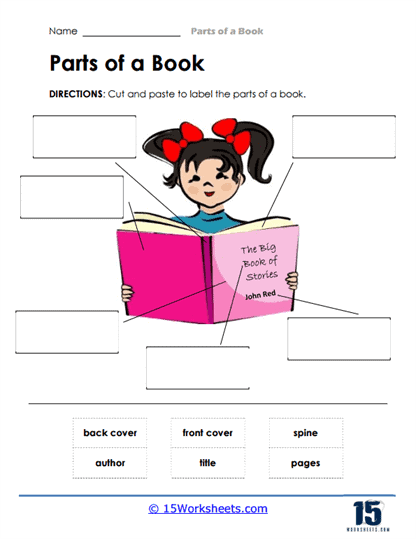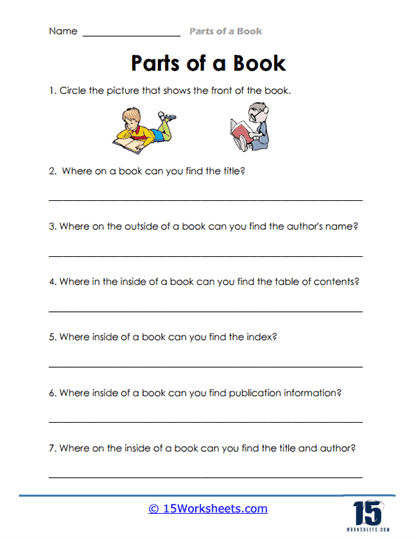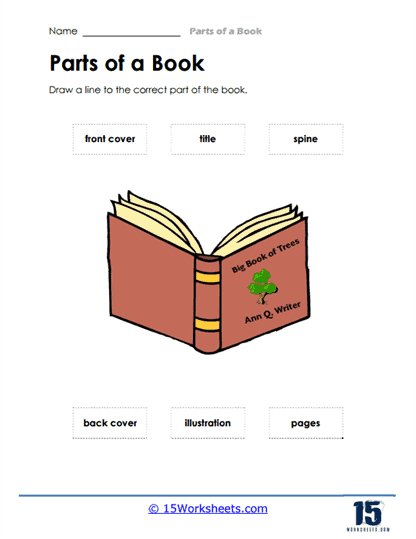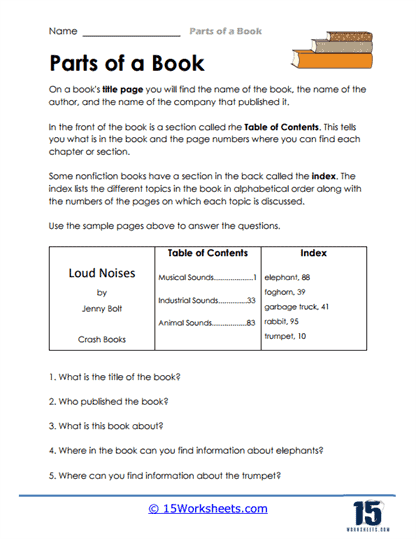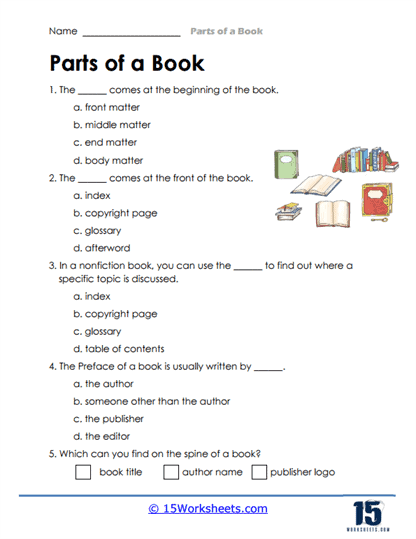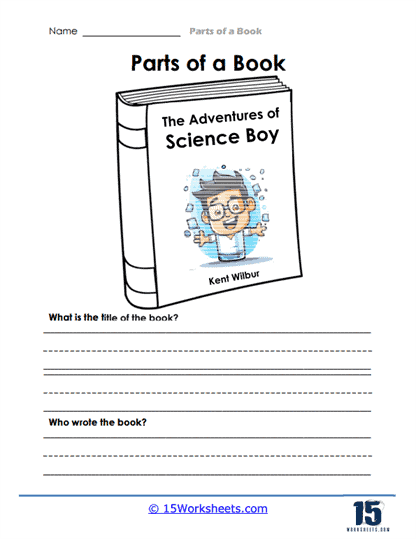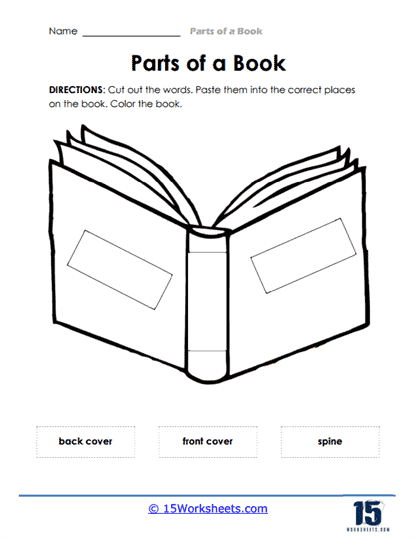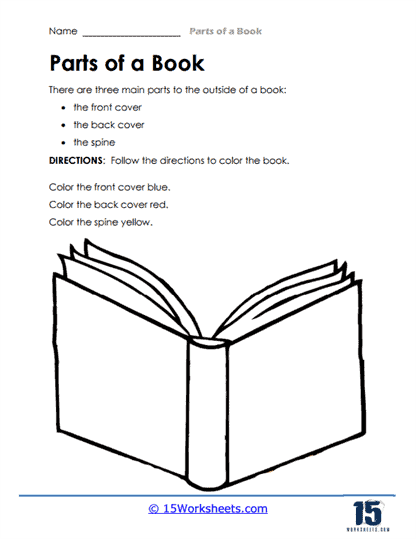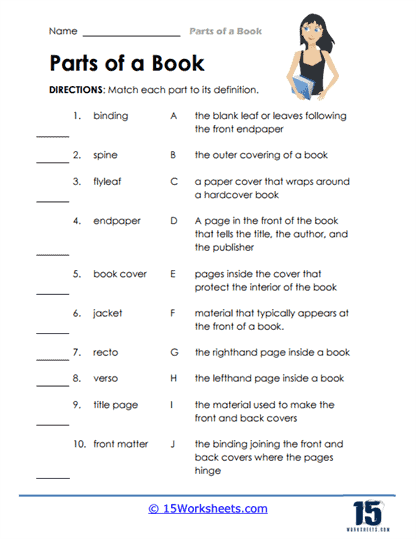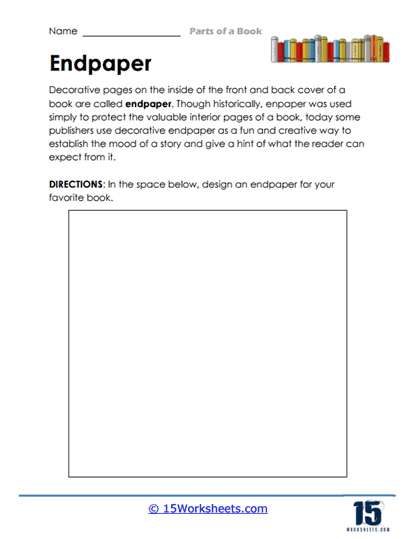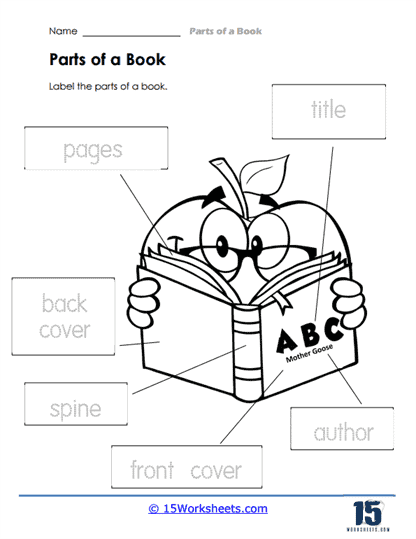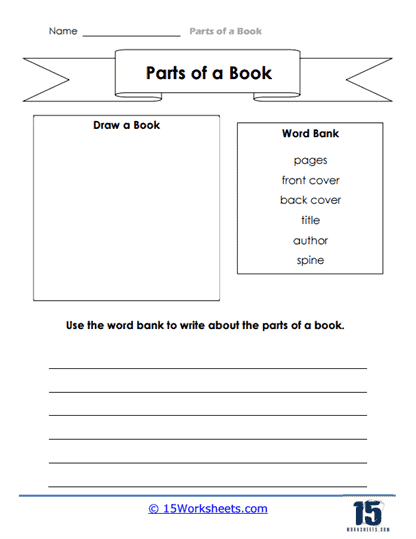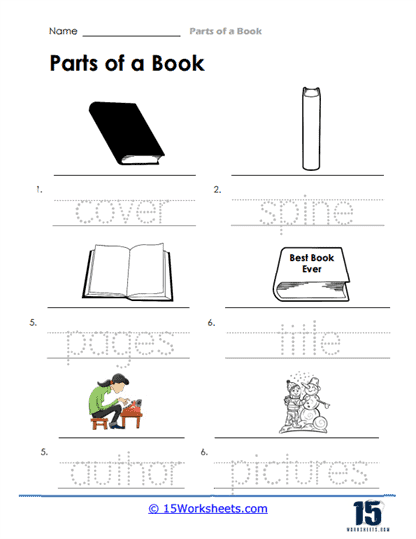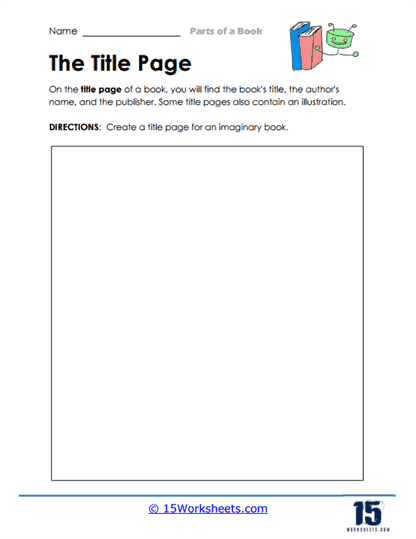Parts of a Book Worksheets
All About These 15 Worksheets
These worksheets are fun activities designed to help children learn about the different components of a book. These components include the front cover, back cover, title page, table of contents, chapters, glossary, and index, among others. Recognizing and understanding these parts can greatly improve a child’s literacy skills, as well as help them navigate books independently and efficiently.
Here’s a simple way to understand it – just like a human body has different parts with different names and functions – such as head, legs, arms – a book also has different parts with unique names and purposes. Each part plays a critical role in the structure of the book and how we use it.
What Will You See On These Worksheets?
Labeling Tasks – These worksheets often contain an image of a book, and the child’s task is to label the different parts correctly. For instance, the child may need to label the spine, cover, author’s name, illustrator’s name, title, etc. This activity will help your child become familiar with where to find specific information on a book.
Matching Tasks – In these exercises, the child may have to match a list of book parts to their correct definitions or images. This reinforces their understanding of what each part represents and its purpose in a book.
Fill in the Blanks – This activity might present a series of sentences with missing words, and your child must fill in the blanks with the correct book parts. This allows them to apply their knowledge in a different context and reinforces their understanding.
True or False – The child may need to determine whether statements about the parts of a book are true or false, based on their understanding of each part’s function. This is a great way to assess their understanding of the topic.
Scenario-Based Questions – These might include questions about what to do or where to look in certain scenarios. For example, “If you wanted to know more about ‘photosynthesis’ in a science book, where would you look?” These questions encourage children to apply their knowledge practically.
Drawing Tasks – These allow children to be creative while learning. They might be asked to design a book cover or draw out and label the different parts of a book. This can help cement the knowledge they have acquired in a more hands-on, visual manner.
These worksheets are a fantastic tool to help your child better understand books and their structure. This understanding is fundamental as it aids in locating information, understanding the context, and overall enhancing the reading experience. And most importantly, it fosters independent learning and curiosity.
What Are the Different Parts of a Book?
Front Cover – This is the first thing you see when you pick up a book. It typically contains the book’s title, the author’s name, and sometimes the illustrator’s name (for picture books). The cover often features an illustration or image that gives a hint about the book’s content. It’s designed to attract readers and give a good first impression.
Spine – This is the narrow side of the book that’s visible when it’s shelved. It usually displays the title, the author’s name, and the publisher’s logo, helping readers identify the book on a shelf.
Back Cover – The back of the book often provides a brief summary or teaser of the book’s content, along with reviews or endorsements, the barcode, and the book’s price. For paperback books, the author’s bio may also be found here.
Title Page – This page contains the full title of the book, the author’s name, and the publisher’s name. In some cases, it may also include the illustrator’s name, the publisher’s location, and the year of publication.
Copyright Page – Often found on the back of the title page, the copyright page includes important information like copyright notices, edition dates, legal notices, the book’s ISBN number, credits for design and production work, and warranty disclaimers.
Dedication Page – Not all books have this, but when present, it’s where the author honors someone or something. The dedication is usually brief and located at the front of the book.
Table of Contents – This is a list of the chapters or sections and the pages on which they start. It helps readers navigate the book. It’s more common in non-fiction books, textbooks, and anthologies, but some long novels may have a table of contents as well.
Foreword – This section is often written by someone other than the author, typically an expert or a respected person in the field. They write about the book and the author from their perspective, providing context or background.
Preface – Here, the author explains how the book came into being, acknowledges any help they received, and perhaps explains why they wrote the book. It’s a way to provide background that doesn’t fit into the main text.
Introduction – This is the author’s chance to set the stage and prepare the reader for what’s to come. It might provide context, explain the author’s intentions, or give a brief overview of the content.
Chapters – These are the main sections of the book, dividing the text into manageable segments, each usually dealing with a specific topic or aspect of the book’s overall theme. Each chapter generally starts on a new page.
Epilogue or Afterword – This is a short section found at the end of the book, wrapping up the story or reflecting on the book’s impact or relevance.
Glossary – This is a list of terms and their definitions that are used within the book. This is particularly useful in academic or specialized texts where the terminology might not be familiar to all readers.
Index – Typically found in non-fiction books, an index is an alphabetical list of names, subjects, and terms in the book and the pages on which they are mentioned. It’s a helpful tool for readers who want to reference specific information.
Bibliography or References – This section lists the sources or works cited in the book. It’s common in non-fiction, particularly academic texts.
Each of these parts plays a role in the book’s overall structure and helps readers navigate and understand the book’s content. However, not all books will include all of these parts. The components chosen by the author or publisher will depend on the nature and purpose of the book.

